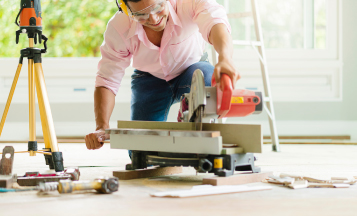To lower your energy bill, take time to winterize your home with these following suggestions.

Make sure your furnace or boiler is up to date.
If your appliance is more than seven years old, it’s not nearly as efficient as newer models that have to meet higher standards. Even though you’ll face an up-front investment, over time you’ll make it back (and then some) in energy savings.
Check ceiling fans for a winter setting.
It might seem unusual to turn a fan on in the winter until you consider the fact that hot air rises. The winter setting gently draws air upward, forcing the hot air at the top of a room to circulate downward.

Use a programmable thermostat.
When you’re away from the house or asleep, let the house cool down into the 60s°. Make sure to set the timer on a programmable thermostat so that the house warms up slowly before you arrive or wake up instead of all at once. Raising the temperature of the entire house quickly requires more energy.
Make sure all your air vents are open and clear of clutter.
Double check the ducts in your basement to make sure none have been switched closed. Alternately, if you have rooms you don’t use, close the ducts in those rooms.

When the sun is out, keep your curtains or blinds open.
After the sun goes down, or if it doesn’t come out, keep them closed. The light from the sun contributes some heat, and curtains help to trap it inside.
If you have radiator heat, keep the area around them clear.
If there’s furniture nearby, it will absorb most of the warmth, and the ambient air temperature will remain cool.

Make some draft stoppers for your doors and windows.
It’s easy to find instructions with a quick search. If you’re really averse to sewing, rolled-up towels will also do the trick.
Seal leaks.
If cold air has a place to seep in, your furnace is going to kick on more often to keep the temperature up. Caulk cord is a cheap and effective way to seal the edges of your windows for the winter.

If you have a fireplace, make sure the flue is closed when it’s not in use.
Otherwise, it’s just as if you have a window open. Also, due to “the stack effect,” when warm air escapes, a vacuum is created and draws cold air in from any possible source near the bottom of the house.
Wear layers and bundle up.
It’s a simple concept, but lots of people overlook it! If you start wearing layers of shirts and sweaters and turn the heat down 5°, you can expect some serious savings on your energy bill.
We can all use extra money – especially around the holidays. A little bit of effort can keep you feeling toasty while also saving you money.
Category: Home Improvement & Security



